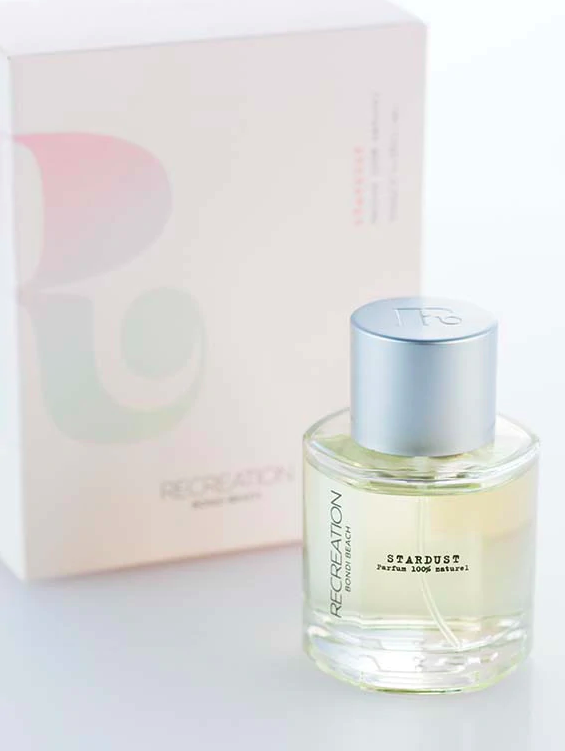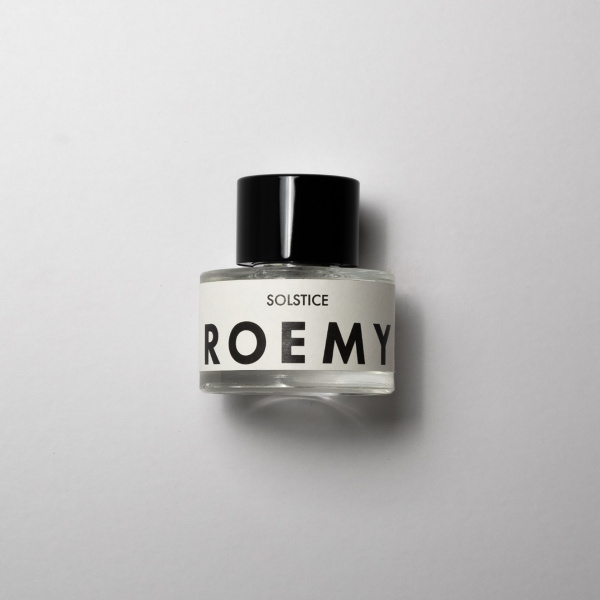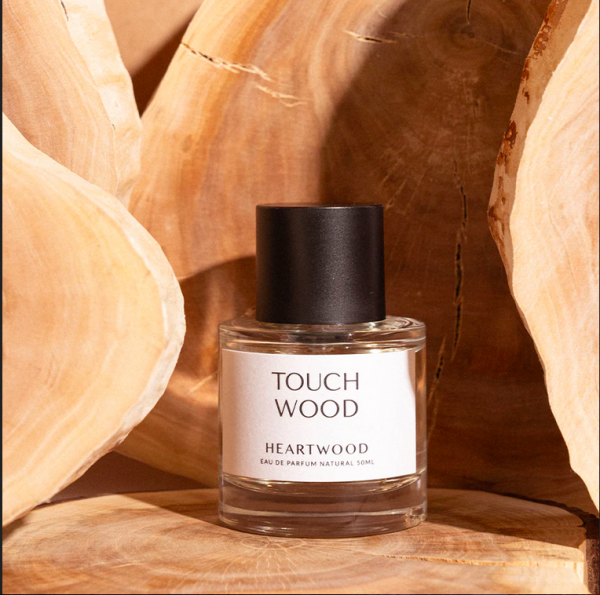
Is clean fragrance the hardest beauty category of all to decipher? We think so
- Beauty
The confusing world of natural perfume
Why natural perfume is the last bastion of clean beauty
By Sarah Tarca
These days it’s not hard to find a clean, green or low-tox beauty brand to love, but what does often require a finely tuned BS detector and a mini-degree in Chemistry is deciphering the truth hidden under layers of marketing hype. And while we’re all becoming pros at reading product ingredients labels, there is one category that remains under a shroud of (confusing) secrecy: fragrance. Sure, there are many “clean”, “natural” fragrances on the market, but aside from cute, buzzy marketing, what does that even mean?
The natural and clean beauty category is unregulated in Australia, meaning there is no legal definition or parameters that brands have to adhere to. A lot of skincare brands have, of their own accord, begun to be more transparent even listing their ingredients on the front of pack (see: Ingredients skincare). But with the exception of some innovative niche brands (more on that later) fragrance companies have been slow to adopt this trend – despite it being a category with a reputation of allergens and irritants.
And that’s because they don’t have to, thanks to a little thing called IP. As Nedahl Stelio, founder of Recreation Beauty explains, “with fine fragrance there can be up to 3000 chemicals used and companies don’t have to list them as the formula is proprietary”.
That means, they’re not legally bound to even list the ingredients on the back of the bottle (or pack), because of the thousands of dollars, expertise and experience it costs to create an original scent – which makes sense from an intellectual standpoint (you wouldn’t see the recipe for Penfolds Grange on the back of their bottles after all).
In fact, according to INCI (International Nomenclature of Cosmetics Ingredients) all you need to do is simply list it as “parfum” or “fragrance”, which is nice for the fragrance houses, but for those wanting to know what they’re putting on their skin… well you get a pat on the back and a shrug of the shoulders.
Because of this blatant lack of transparency it’s not surprising to see so many people jump on the natural fragrance bandwagon assuming they’re making the better/safer/less irritating choice. But that is the first problem here because with fragrance it’s sadly not that black and white. Not only are a lot of natural ingredients as potent and allergenic (often, more so) as synthethics, they’re often less sustainable. Plus, natural fragrance brands have no legal obligation to list their ingredients either – meaning the whole thing is an absolute minefield. Here we navigate the not-so-clean-cut world of natural fragrance together.
What makes a perfume natural?
The first thing you need to know is the use of the term natural in beauty products (of any kind) is a murky one. There is very little regulation and brands are also free to use the word natural in their branding, irrespective of the percentage of natural ingredients used.
With fragrance it’s a similar story, however if a brand claims to be 100 per cent natural it does have to contain naturally occurring substances (essential oils, resins, absolutes, even soil microbes). But here’s where it gets grey: within this definition of “naturally occurring substances” lab-made “nature identical” compounds are also included as are ingredients fermented from natural compounds. And what exactly falls under those natural definitions varies between the US and EU too (Australia generally follows the latter) so what is classed as natural in one region is not in another. Is your head spinning yet?
Natural vs Sustainable PERFUMES
And then we move onto sustainability – an area where fragrance is not exactly known for leading the charge. The boxes within boxes within sleeves, wrapped in plastic are only the beginning here too. Because when it comes to ingredients, the natural route is often the worst for the environment. Take vanillin, which, in its natural form is extracted from vanilla bean. There is a worldwide shortage of vanilla bean so it makes both economical and financial sense here to use a synthetic.
This is something that Laura Herriott, founder of ROEMY knows well, which is why she chooses to use a combination International Fragrance Association (IFRA) approved synthetics and natural ingredients in her scents.
“There is a stigma around the use of synthetics, however IFRA approved synthetics have been rigorously tested and deemed safe by the highest fragrance standards in the world. This combination of ingredients results in an eco-conscious product as we don’t rely on excessive resources to grow and extract natural oils.” It means they rely less on farming which, as Laura says, equates to “less resource waste, deforestation, waterway pollution, transport costs, and the use of GMOs, herbicides, and pesticides and we can control the allergens too.”
Allergens, phthalates and your hormones in frAGRANCE
Here’s where we start to see a little more clearly through the mud. Because, according to the EU cosmetic directive, even mass fragrance companies must expose their potential allergens if the scent includes one of the known 26 allergens they recommend listing. These can be anything but ironically a large portion of them are commonly found in essential oil blends. Of course the issue is that people can be allergic to anything – natural or synthetic – so this only solves part of the problem.
Both Recreation and ROEMY reject this shroud of secrecy around ingredients and proudly flaunt transparency. At ROEMY this translates beyond ingredients (which naturally they list) but they also have clear, readily available information about their packaging and sustainability practices – something which a lot of mass brands fails to do. At Recreation, they list every single ingredient in their scents, so if someone knows they’re allergic to an ingredient (say Jasmine, or particular citruses) they can avoid that fragrance. They even use 100 per cent naturally derived alcohol from sugarcane as this too is a known irritant. For both Laura and Nedahl, this is where niche fragrance brands really shine – hiding nothing so that the consumer can make the most informed decision.
The other key reason more and more people are jumping to clean fragrance is the concern around phthalates (a common mass-market chemical ingredient) and the (convincing) research coming out about the effect it has on your hormones. This was one of the driving forces behind Nedahl creating Recreation – when she struggled to fall pregnant she was advised to ditch all the chemicals in her beauty products, but at the time (12 years ago) there was no elegant clean option for fragrance – so she created one.
Recreation fragrances have a big “no” list of ingredients, but the main two are phthalates and synthetic musks. Nedahl explains, “they’re both endocrine disrupters which means they wreak havoc on our hormones. From mood swings, headaches and weight gain to more serious issues like messing with your reproductive system and then other illnesses like autoimmune diseases and other chronic disease. Phthalates have been linked to hyperactivity disorder, breast cancer, obesity and type II diabetes, low IQ, neurodevelopmental issues, behavioral issues, autism spectrum disorders, altered reproductive development and male fertility issues,” she says.
While many phthalates have been banned out of caution from such research, one called diethylphthalate (or DEP) is still widely used in fragrances as the research has yet to prove that there’s a health risk when applied at normal (everyday) levels. But the problem with that is that DEP is used in almost every fragranced product in our homes.
“The research that’s coming out now points to the cumulative effect of this usage from many many different products over the course of our lives,” says Nedahl. Think: cleansers, body wash, lotions, scrubs, shampoos – plus even cleaning products and laundry detergent. So if you’re thinking of going phthalate-free, you need to rethink your entire household – not just your beauty cupboard.
“Phthalates are also in things we can’t control like plastics and carpet and vinyl, so my approach is that where we can control usage, (i.e. our beauty products), we should,” Nedahl says.
It’s all… a lot. I know. And for us regular people who just want to smell nice, it also feels pretty overwhelming. Ultimately, it’s a personal decision (it is your body after all), but if your goal is a more low-tox life at the very least looking for phthalate-free fragrances who are transparent about their ingredients is a good place to start.
What I’m wearing
Just a few of my clean fragrance favourites
Recreation Beauty Stardust EDP
When they talk about a fragrance journey, they’re talking about Stardust. It starts light and fun with a fruity floral vibe (lemons, bergamot) then gets more serious with a bolder heart of iris, drying down to a sexy sandalwood and musk base. Unexpected at every turn, it smells like nothing else.

Some of my greatest fragrance loves over the years have been big white florals, so this, with gardenia at the top and jasmine as the heart, hits all the nostalgia, but the moss, musk and amber base grounds it and makes it feel more grown up (in the sexiest possible way).

I have a soft spot for sandalwood – my late stepdad wore it and it always feels like home for me – and this happens to be what Heartwood specialise in, sustainably growing sandalwood in WA’s Kimberley region. Touch wood is a sexy, earthy, woody scent with all my ingredient greatest hits: Indian sandalwood (naturally) Cedarwood, Black pepper, Cardamom, Frankincense, Geranium, Vetiver, Patchouli… it’s probably your new winter scent.

RELATED: Bye Botox, anti-aging the 2022 way
RELATED: 3 of the best serums for winter
